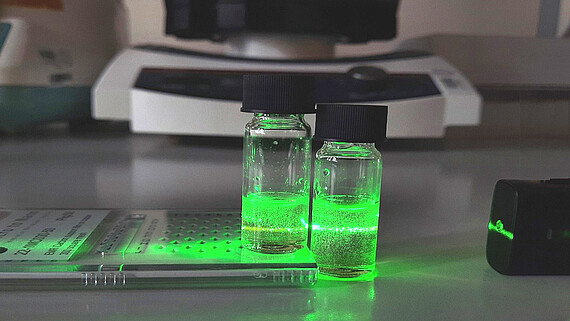
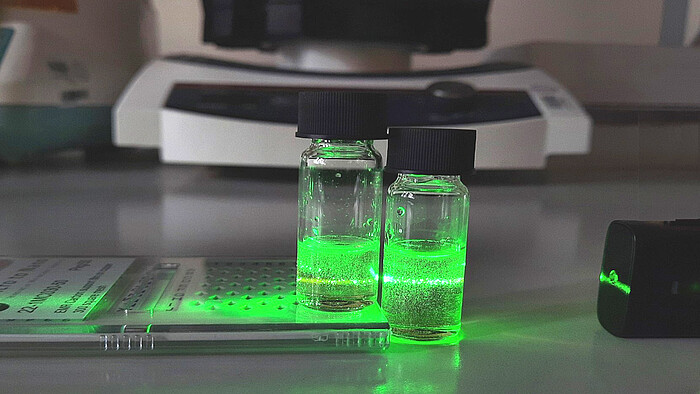
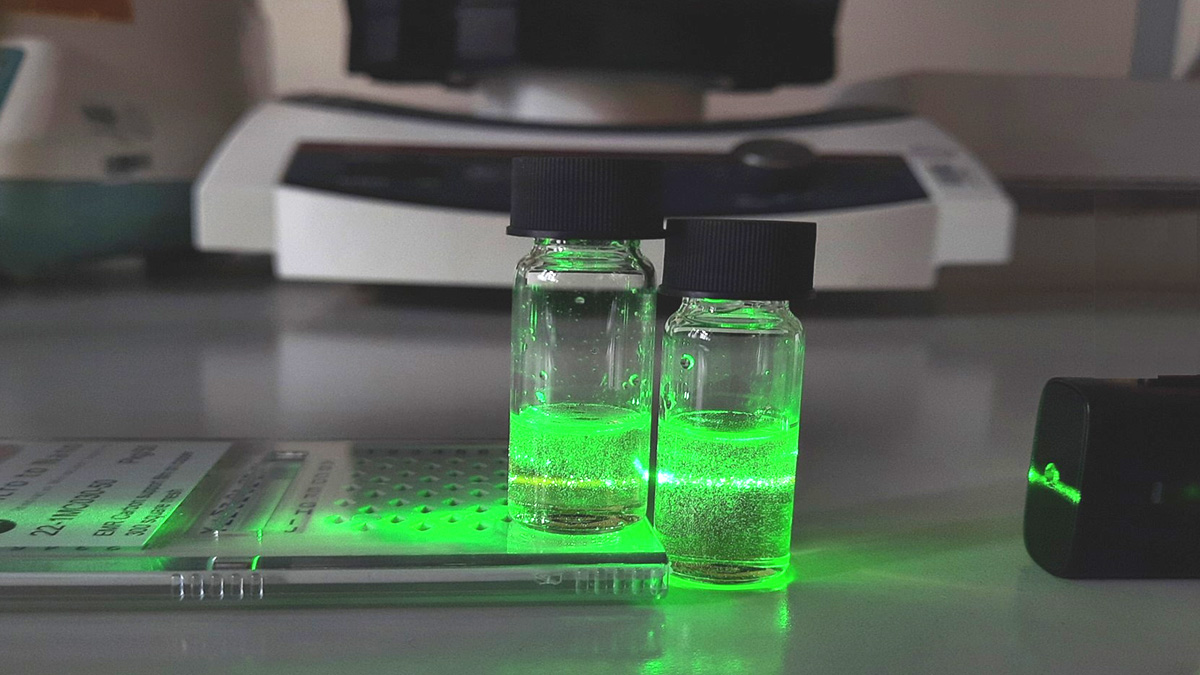
The relationship between structure and function is elementary in solid state chemistry. Because of the increasing complexity in materials on different length scales, the development of advanced methods for structure analysis are needed. The spotlight in the research group Krysiak lies on the analysis and preparation specifically produced, complex atomic- and particle-based materials, without losing sight of the function. On the one hand, the focus is on the structure elucidation of dynamical processes in solids, and on the other hand, on the order of mesocrystalline systems and their cooperative properties. Three-dimensional electron diffraction (3D ED) is used as our main tool and we are constantly developing it further.
Electron diffraction
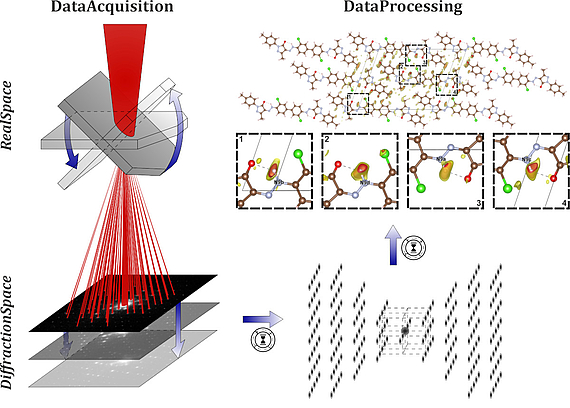

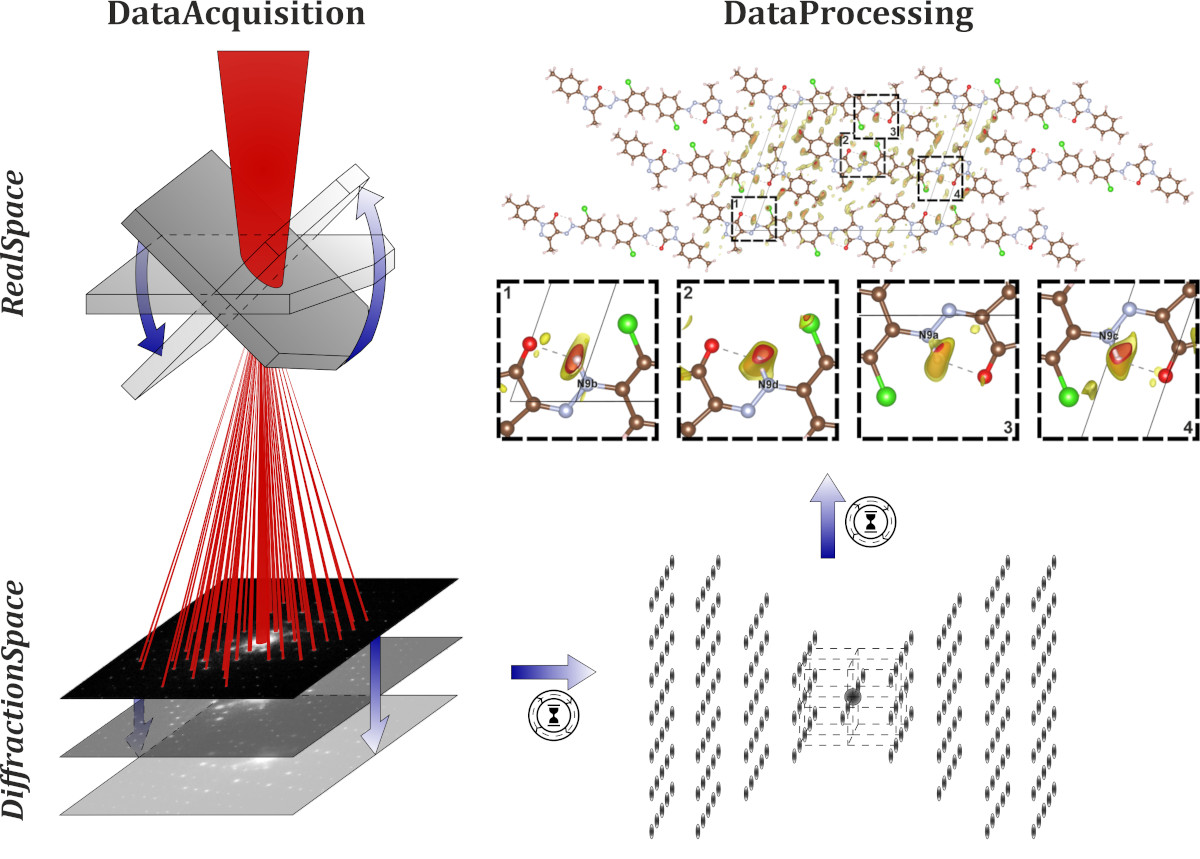
With the discovery of electron diffraction in 1927, not only the first proof of the wave character of electrons was discovered, but a method for the structure analysis of thin films also developed (d < 5 nm). Thanks to the development of the tomographic data acquisition 15 years ago, electron diffraction has been rediscovered and continuously developed since then, making it possible to analyse single crystals in a similar way like it is known from single-crystal X-ray diffraction. This allows, on the one hand, the structure determination of particles with the size of a few nanometres, and on the other hand, to take a close look at the microstructure of a material. In the course of the development of automated acquisition of 3D electron diffraction data, which is just beginning, we are developing routines and measurement sequences on our own transmission electron microscope that are tailored to the material in question and allow us to use the device as an electron diffractometer.
In cooperation with the Laboratory of Nano and Quantum Engineering (LNQE) we provide tools for the structure analysis of, e.g., proteins, small molecule structures or intermetallic alloys. In addition to pure structure elucidation, we are deeply involved with:
- Guests in zeolites, MOFs, COFs and their dynamics
- Absolute structure determination of zeolites
- Atomic deciphering of new biominerals
- Ion diffusion in crystals
Layered structures
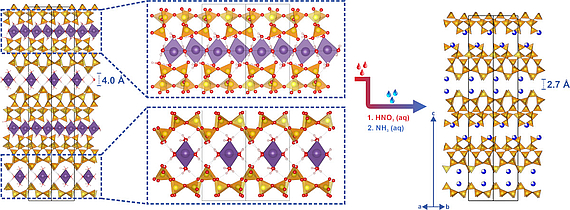
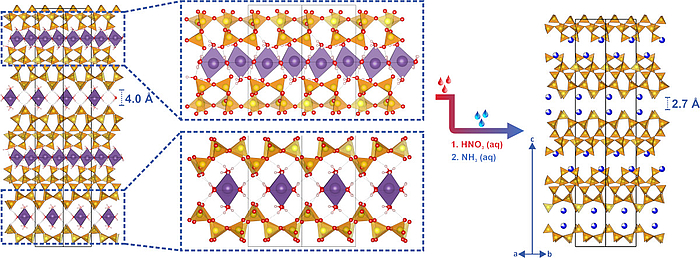
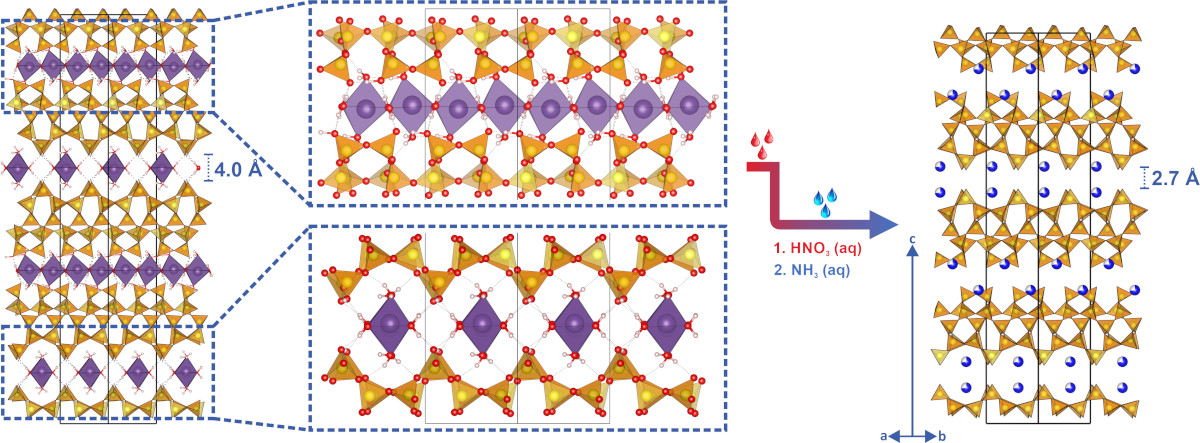
"Layered structure" is a broadly defined term for a number of materials, that are structurally defined by strong interactions (typically covalent bonds) between atoms in two dimensions and weak in the third dimension. This class of materials is used for intercalation, catalysis, ion exchange or also the capturing of CO2.
We deal with the preparation of layered structures whose ions can be exchanged:
- Synthesis of naturally occurring hydrous layered silicates
- Cation exchange through alkaline back titration
- Structure- and function-directing organics in 2D perovskite phases
A strict periodicity in the stacking direction of the crystal structure is often not fulfilled, can complicate the structure elucidation of novel layered structures. In this context, our structural analysis makes a decisive contribution to a deeper understanding of the structure and function of the complex layered structures. We therefore focus on:
- Structural analysis by means of powder diffraction and 3D ED of layered structures
- Modelling of stacking faults and simulation of diffuse scattering
We also aim to produce novel periodically alternating hybrid materials using layered silicates, hybrid 2D perovskites and layered double hydroxides as building blocks.
Hierarchical structures
The concept of periodically arranged atoms forms the basis for understanding most solid-state materials. The periodicity is decisive for many physical properties of the solid, which depend on many parameters like the chemical composition, but predominantly by the local arrangement of the atoms relative to each other. From a mathematical viewpoint, the periodic arrangement of any type of building block in space is already considered a crystal. Why not in solid-state chemistry as well? We want to transfer concepts from crystallography and single crystal structure analysis to other length scales and are working on the preparation and structure analysis of nanoparticle-based mesocrystals and superparticles in close collaboration with the Polarz group. Specifically, we are concerned with the interaction of isolated solid-state properties of the particles in an ordered ensemble and raise the question of whether directed cooperative properties can be realised. Our objectives are:
- Control and analysis of the orientation of individual building blocks in particle-based 2D mesocrystals
- Synthesis and structural analysis of superparticles
Since certain defects can also form as in atomic crystals, we are also concerned with the disorder modelling and simulation of diffuse scattering of mesocrystals.
Cooperations
National partners
International partners
Head of the group
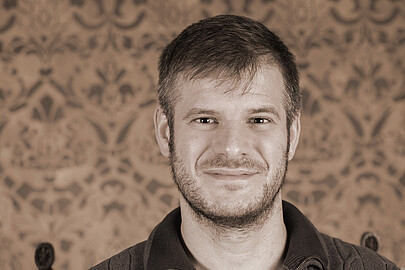
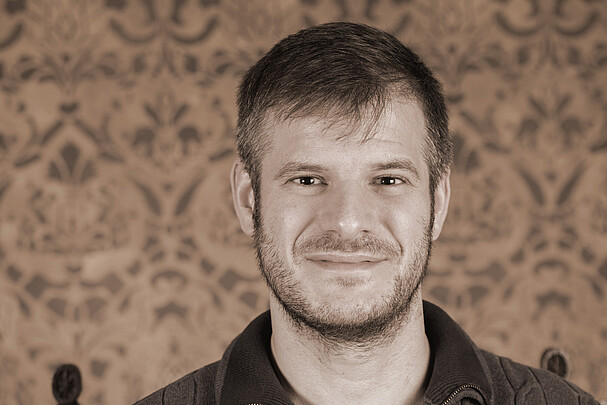
30167 Hannover




